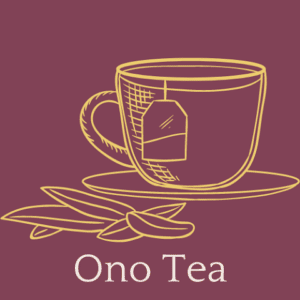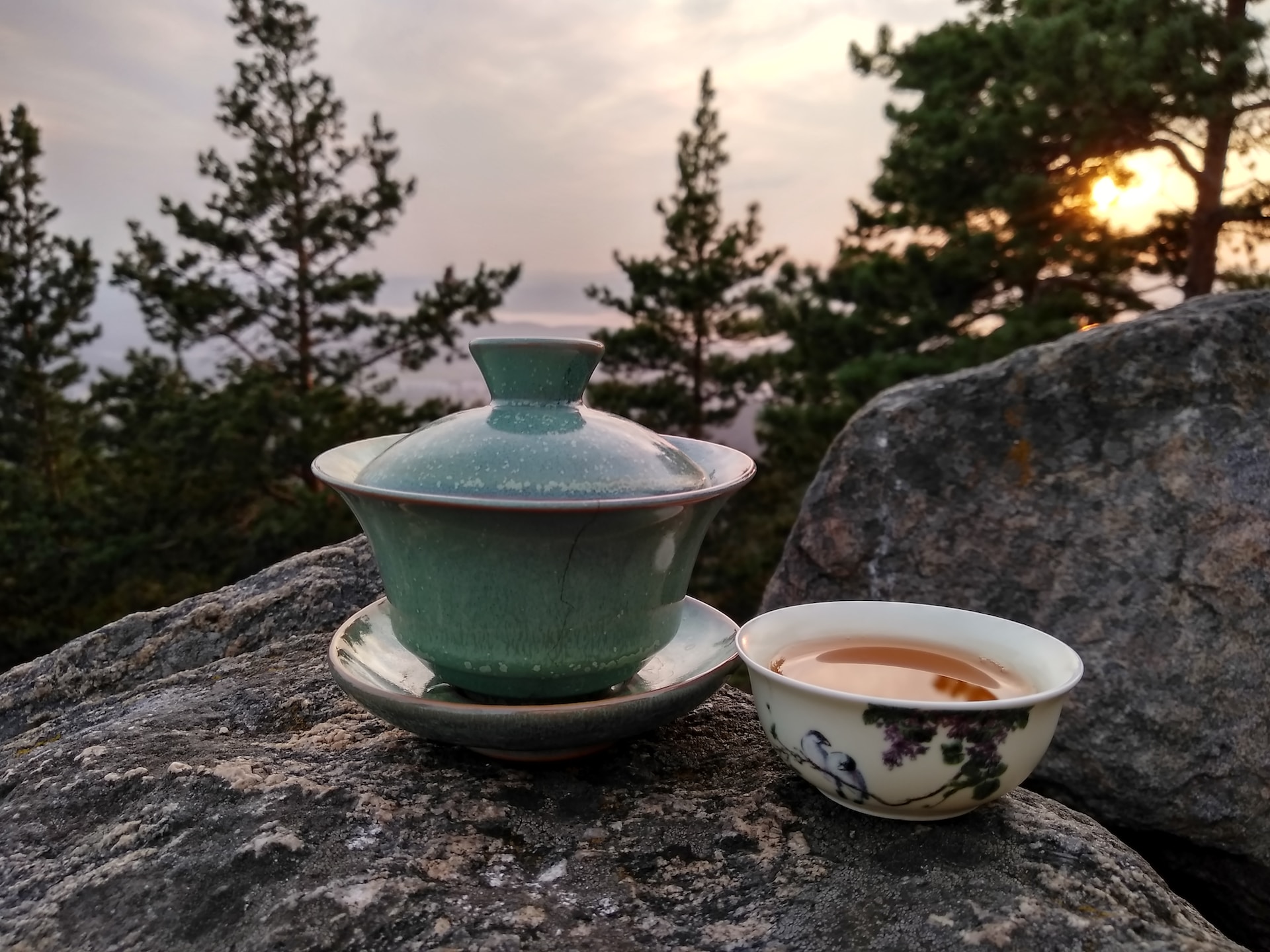You must have heard about China’s Fujian province, which is a hidden treasure for the most extravagant teas in the world. In the Wuyi Mountains of Fujian lies the hub of Oolong tea, known as Wuyi Oolong tea.
The tea has a complex and rich taste and an interesting history extending back several centuries. It is a symbol of Chinese tea culture due to its organic origin, cultivation techniques, and brewing methods.
The Wuyi Mountains are known for their breathtaking landscape views. The cliffs and rivers in the Wuyi Mountains provide an ideal environment for the growth of high-quality Oolong leaves. The perfect temperature, climate, and soil of the Wuyi Mountains help create one of the best Oolong Teas with high flavor profiles.
In this article, we are going to shed light on the amazing Wu Yi Tea that every tea lover must taste. If you are a tea drinker, we will convince you to try this tea as soon as possible. By the end, you will know everything about the flavor profile, brewing techniques, benefits, caffeine amount, and much more.
So, without further delay, let’s begin understanding the details of this precious tea:
History of Wuyi Oolong Tea
Wuyi Oolong Tea has an interesting history that stretches back many centuries; hence, it has a huge cultural value and significance. It is said that a scholar named Wu Li Zhen took shelter in the Wuyi Mountains, and while exploring the surroundings, he came across a tea tree and decided to brew a hot cup of tea. He was surprised to experience a rich and aromatic cup of tea with a unique taste. Hence, technically, Wu Li discovered this precious tea, and not many people are aware of it.
However, the Wuyi Tea gained popularity and came into the limelight during the Mid Dynasty era from 1368 to 1644. Initially, it was a favorite of scholars and literate people who enjoyed exploring its different tastes and aromas. They considered the tea a symbol of calmness and sophistication. The imperial court gave it the rank of ‘tribute tea,’ which is a special title given to the highest quality teas only.
The popularity of Wuyi Oolong Tea reached new heights during the Qing Dynasty from 1644 to 1912. It was considered a precious gift by emperors and nobles and was often presented to foreigners. Ever since then, the demand for tea has increased exponentially in the region.
Global recognition happened in the 19th century when tea expanded to international markets. Its amazing taste and aroma led to an increase in popularity as more and more people kept drinking it. Tea enthusiasts around the world reviewed it as the most special and unique-flavored tea.
For so many centuries, Wuyi Oolong Tea has been moving upward and onward in fame due to its quality and taste. It has a distinct flavor from other types of tea, which is why it is so loved around the world.
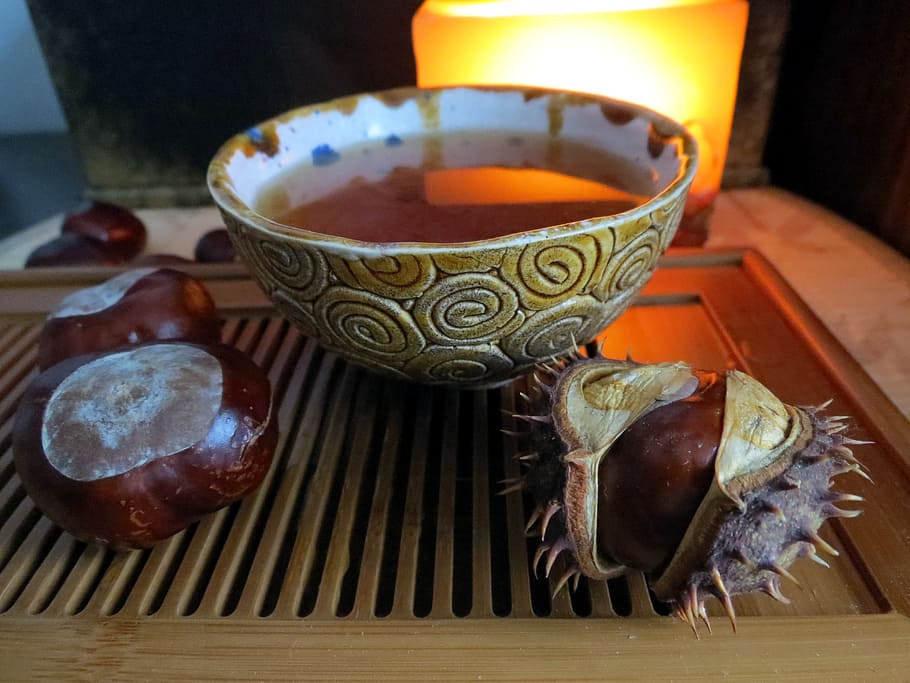
Wuyi Mountains: The Tea-Growing Environment
Wuyi rock tea resides in its perfect home, the Wuyi mountain range, within the most suitable environment. The mesmerizing landscapes of the Wuyi Mountains have the ideal climate for the growth of tasty and flavorful tea. Even the soil of this region is highly favorable for growing delicious Oolong tea.
The high mountains and cliffs provide the optimum balance of sunlight and shade for the tea leaves, making their cultivation smooth and easy. The slight mist in the environment provides moisture to the tea plants for enhanced flavor and aroma.
The tea production mainly takes place on the rocky terrain of the Wuyi Mountains. These rocks provide essential nutrients to the tea leaves and make them even more beneficial for people.
The main reason for such a unique and distinct flavor of the tea is the climate of the region, as it enhances its flavor by providing the perfect temperature and moisture. There are abundant rainfalls throughout the year that save the tea plants from drying up. The plants are grown slowly to preserve their natural essence and nutrients to the max.
Wuyi Mountains are indeed a ‘Tea Haven’ which creates one of the most amazing teas in the world. It depicts the true Chinese culture and tradition by giving the precious gift of Wuyi tea.
Cultivation and Harvesting Techniques
The exquisite taste of the Oolong teas is mainly because of the top-notch cultivation and harvesting techniques followed by the hardworking farmers. The first step of the process involves the selection of tea plants carefully grown under utmost care and precautions.
The farmers of these tea gardens pour their hearts and soul into creating the best Oolong teas for us. Since Wu Yi tea is derived from the plant named Camellia Sensis plant, which has smaller leaves and slower growth, it takes time to grow, but in the end, the flavors and aroma are worth the wait.
So, let’s discuss some of the cultivation and harvesting techniques followed by the farmers:
Cultivation Techniques
To grow healthy tea plants, it is crucial to follow the right cultivation techniques, which results in high-quality flavors of the tea. Here are some of the prominent cultivation techniques:
1. Site Selection
The farmers carefully assess the location and choose the most promising site according to the temperature, soil, and exposure to sunlight. It might take days for the farmers to decide on the perfect location for the optimum growth of tea plants.
2. Managing the Soil
The rocky soil of the Wuyi region consists of abundant natural nutrients that participate in the flavor profile of the tea. Hence, it is crucial to keep the soil in perfect condition so the tea can be flavorful and aromatic. The farmers avoid using chemicals to speed up the growing time of the plants. Instead, they patiently wait for them to grow at their own pace. Their main goal is to keep the tea organic and preserve its natural taste.
3. Pruning
Another important part of Oolong tea’s cultivation is plant pruning. It is done to shape the plant for healthy growth and control the growth of extra leaves.
4. Pest Control
The farmers implement helpful pest-controlling strategies without the use of pesticides. It includes the regular maintenance of the plants to avoid getting any pest attacks, the promotion of a balanced environment for the plants, and keeping the whole process chemical-free.
5. Sufficient Water
For the proper growth of the tea plants, it is crucial that they receive abundant water and proper irrigation. Luckily, there are sufficient rainfalls in the Wuyi region, so there isn’t much danger of the plants getting dry. The farmers still keep a check and balance on the amount of water these plants receive. They take measures to keep the moisture level balanced.
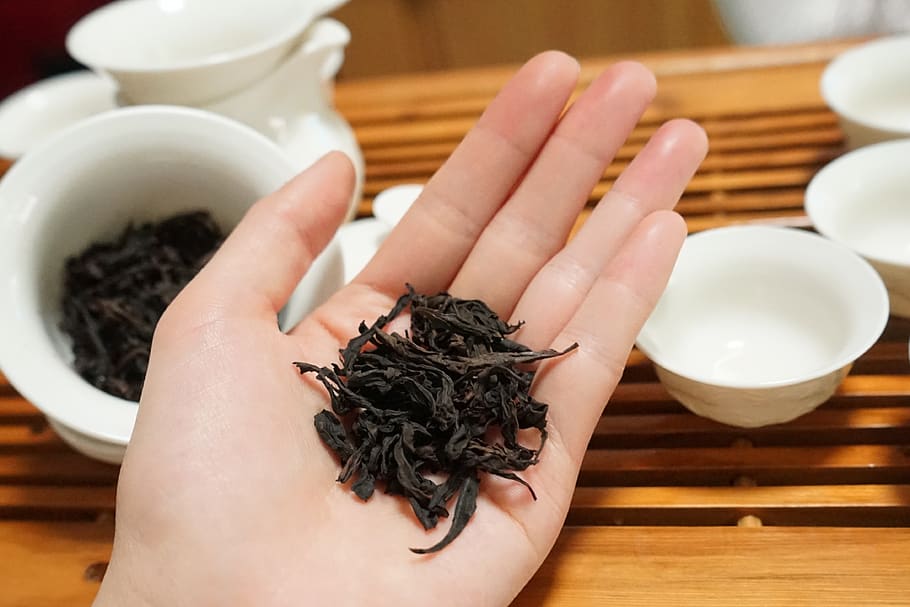
Harvesting Methods
The harvesting of the Oolong tea plants is equally crucial to maintaining the end quality of the tea. Here are some of the harvesting methods followed by the farmers:
1. Multiple Harvesting Times
Interestingly, Oolong tea has several harvesting times throughout the year, and each season has distinct qualities. The most valuable harvest is during the springtime, which are young and tender leaves that make a mild and delicious flavor profile. The summer and autumn harvests have more matured leaves and result in strong and sharp flavors.
2. Selective Hand Plucking
The tea farmers selectively hand-pluck the highest-quality leaves at a young age that produce more flavorful tea. Hand plucking allows the farmer to choose only the good leaves. It requires a high level of expertise because the farmers should be able to spot the perfect leaves. Hence, the farmers need to be knowledgeable about the care of harvesting Oolong teas.
Processing or Roasting of the Tea Leaves
Converting the freshly harvested tea leaves into a variety of teas according to the flavor profiles and aromas is another essential step. Usually, traditional processing methods are followed, passed down through generations, and they are the best of all.
Let’s discuss the steps of the processing and roasting applied to the Wuyi Oolong teas:
1. Withering
Withering means the tea leaves are spread out to wilt and reduce their moisture content to preserve their flavors. It is carried out indoors so that the temperatures can be controlled according to the need.
2. Oxidation
The withered leaves are then gently tossed or shaken to initiate the process of oxidation. Oxidation is an essential step that affects the flavors and uniqueness of the tea. The level of oxidation can be adjusted according to the desired style of the tea, i.e., lighter oolongs or darker oolongs.
3. Fixation
Now, it’s time to deactivate the enzymes responsible for oxidation through the process called fixation or kill green. In this process, the withered and oxidized leaves are subjected to high heat. It preserves the freshness of the leaves and sets the desired flavor profile of the tea.
4. Rolling
The tea leaves are rolled either by hand or by machines to shape them into different sizes and types. It helps the leaves to release their essential oils to develop their aroma and flavor.
5. Roasting
The signature and most important step in the processing is ‘roasting.’ It provides distinctive roasted flavors to the tea. It takes place on low heat to avoid over-roasting them. This step also helps to remove extra moisture from the tea to increase its shelf life. It can be done until the desired depth, color, and aroma is achieved.
6. Grading
Once the tea is ready after roasting, it is sorted and graded according to its flavor and taste so that the end user can buy it to his liking. The tea is carefully inspected by skilled masters who assign grades to it according to its quality.
Types of Wuyi Oolongs
Wuyi Oolong has several types distinguished by their unique characteristics and processing methods. Understanding the types can help you decide which one will suit your taste buds. So, without further delay, let’s begin:
1. Da Hong Pao
The most famous type of Wu Yi tea is Da Hong Pao, often known as the king of all oolongs. The tea comes from the selected leaves from ancient tea bushes. It is extremely rich and complex in flavors, roasted notes, and aftertaste. It is indeed one of the best types of tea.
2. Shui Xian
With a wide range of fruity to floral notes, Shui Xian Oolong is another widely consumed type. It is also known as ‘water sprite.’ The diverse flavor profile and depth of the tea make you crave it.
3. Rou Gui
Rou Gui has a similar aroma to cinnamon which is why it is a favorite among cinnamon lovers. It is a floral and spicy flavor with a hint of sweetness. The taste is smooth and strong.
4. Tie Lou Han
Tie Lou Han is known for its mineral undertones and strong flavors. It has a unique roasted aroma and a sweet aftertaste. If you like your tea a little sweet, Tie Lou Han can be a suitable option to consider.
5. Bai Ji Guan
Bai Ji Guan differs not only in taste but also in appearance. It comes from unique yellow leaves having a smooth flavor with floral and honey notes. It is a rare type of tea and is cherished throughout the world.
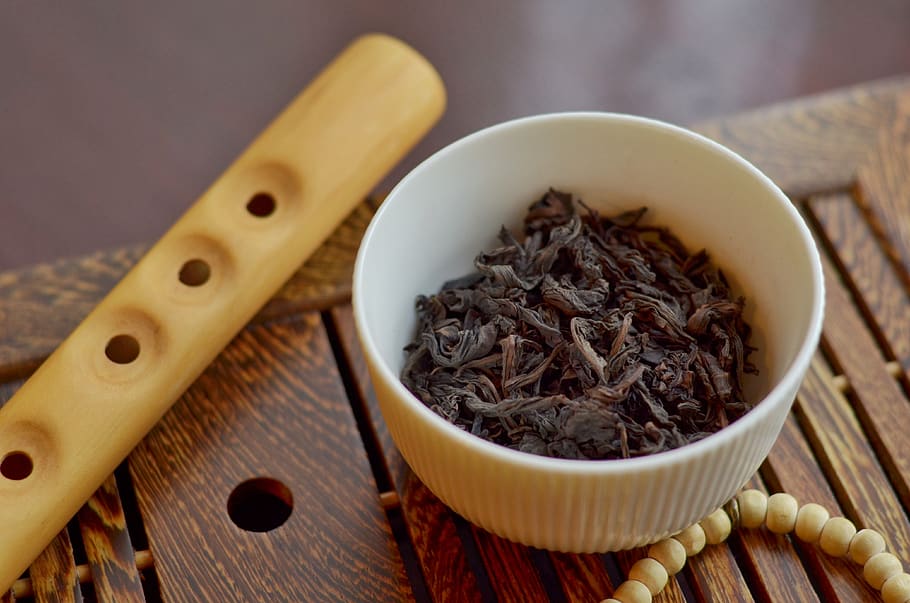
Grades of Wuyi Oolongs
Wuyi teas also have a variety of grades, and a tea enthusiast must know about them so that he can get the right grade tea for himself. Following are the grades of Wuyi Oolong:
1. Zheng Yan (Authentic)
Zheng Yan refers to the teas grown in the original Wuyi Mountain tea growing area. It is the highest-graded tea made with tea bushes grown on Wuyi rocks. The rich and complex tea flavor, long-lasting aroma, and mineral-like taste make it distinct from others.
2. Ban Yan (Half-rock)
The tea is grown at a slightly lower altitude than Zheng Yan is Ban Yan. This tea is a little mild with similar notes and flavors. It can be a suitable option for people who are not a fan of strong tea taste. Ban Yan is also of great quality.
3. Zhou Cha (Boat Tea)
The tea grown outside the core Wuyi Mountain region is known as Zhou Cha. This type is comparatively affordable and widely available around the world. It has less complex flavors and can be a good option for people who are beginning to drink tea.
Flavor Profile and Notes
Each cup of Oolong tea offers a range of textures, flavors, and aromas, due to which it is so widely loved. It has complex and unique flavors that provide a sensory experience. Some of the characteristics of the tea due to its flavor profile and tasting notes are:
Delightful Aroma
The captivating aroma of the Oolong tea gives you a feeling of freshness and delightfulness. The fragrance of the tea is a perfect blend of floral, fruity, and roasted notes that uplift your mood instantly. During the brewing or steeping of the tea, the aroma intensifies and further adds hints of honey, toasted grains, and orchid fragrances.
Flavor
The flavor profile of Wuyi tea consists of various taste elements. Initial sips give a mild and smooth sensation with gentle sweetness. As you keep drinking the tea, it becomes more complex with floral and fruity notes. The overall flavor further enhances due to the earthy or rock taste in the tea.
Texture
It has a velvety texture that stays on your palette for quite some time. The texture further improves the taste and mouthfeel of the tea, making it a top choice for tea lovers. Its smooth and silky feel makes you crave it again and again.
Aftertaste
The most important characteristic of Oolong tea is how it makes your mouth feel after you drink it. Your tongue can feel a sweet, fruity, floral, and mineral taste for several hours. Hence, you have a memorable experience drinking Wuyi tea.
Health Benefits of Wuyi Oolong Tea
Wuyi rock tea does not only taste and smell good; it provides several health benefits. This is why it is such a treasured tea in Chinese culture.
Let’s discuss some of the potential health benefits of this rock tea:
Healthy Heart
Wuyi tea is rich in antioxidants which are said to be extremely beneficial for your heart health. It reduces the risk of cardiovascular diseases by regulating your blood pressure, reducing cholesterol levels, and oxygenation of the body. Blood circulation also becomes better in the body.
Digestive Health
Wu Yi tea has been a traditional medicine for the promotion of a healthy digestive system. It aids digestion and reduces bloating by stimulating the digestive enzymes in the stomach. There is also a boost in the amount of positive bacteria in the gut to improve your gut health.
Oral Health
Wu Yi tea has antimicrobial properties, which are said to be highly beneficial for oral health. It stops the growth of oral bacteria and prevents cavities. Moreover, it makes your breath fresher. Your teeth will become stronger and cleaner once you incorporate the tea into your daily routine.
Weight Loss
Wuyi rock tea helps in weight loss by speeding up the metabolism of your body. When you consume the tea regularly, along with a healthy diet and physical activity, you will start losing weight. Even if you do not want to lose weight and only wish to maintain it, this tea can be equally beneficial for weight management too.
Stress Reliever
Wuyi Oolong tea provides a sense of calmness and relaxation. So, if you are stressed, make yourself a cup of rock tea and relieve your stress. You will instantly start feeling better, and your stress or anxiety will be gone.
Tips For Brewing Wuyi Teas
The brewing technique used for making Wuyi teas can directly affect your tea experience. Hence, you need to follow the right tips and tricks to get the perfect taste. Following are some of the tips that you can apply while brewing yourself a cup:
- The best tea is brewed at a temperature between 88°C to 96°C. So, let your boiled water rest for a few minutes before steeping the tea for more flavor.
- Take a teaspoon of tea for around 8 ounces of water; you can adjust the amount of tea according to your preference though.
- A good steeping time is around one to two minutes.
- It tastes best in traditional tea sets such as clay tea sets.
- To maintain the tea temperature, prewarm your teapot and tea cups by rinsing them with hot water.
- Do not over brew the tea because it can ruin the taste. However, you can brew according to your personal taste.
- Inhale the aroma deeply before drinking the tea.
- Sip the tea slowly while enjoying the whole experience and understanding the rich history of its Chinese origin and culture.
- The tea is best enjoyed on its own without any additives. You can have some light snacks with it if you like.
FAQs
1. Is it safe to drink Wuyi tea during pregnancy or breastfeeding?
Generally, it is safe for moderate consumption by everyone and has certain benefits too. However, it can vary from person to person, so it is always to consult your healthcare professional. They will guide you about the suitable quantity and strength of the tea according to your condition.
2. Does Wuyi tea go bad after some time?
No, it is said that the tea improves its taste despite being old. However, it needs to be stored well in low humidity, with no exposure to the sun, and at optimum temperature. If you keep your tea in these favorable conditions, do not worry about its taste going bad.
3. Can I drink Wuyi tea if I have caffeine sensitivity?
Oolong tea does have caffeine content, but it is quite less than black tea or coffee. Hence, it might not be as harmful to you, but still, you should drink it at your own risk or consult with your physician about it.
4. How to store the tea to preserve its freshness?
Storage of the tea plays an important role in increasing its shelf-life. You should store it in an airtight container and away from direct sunlight, heat, moisture, and strong odors. Moreover, you should not keep the tea in the refrigerator as it can ruin it.
5. Is the tea vegan-friendly?
Yes, Wuyi tea is completely vegan-friendly and suitable for people who have such dietary restrictions. However, the flavored versions of the tea might have additive non-vegan ingredients, so you should carefully read the label.
Conclusion
Wuyi Oolong Tea is a gift of the history, heritage, and culture of Chinese people. Its unique flavors and health benefits have made it a widely favorite beverage. It would be extremely difficult to come across a tea enthusiast who does not know about this tea.
In the beautiful landscapes of the Wuyi mountains, this tea is grown under perfect environmental conditions and natural circumstances. The experienced farmers grow tea plants without the use of any chemicals to preserve their nutrients. After harvesting, the tea goes through the safest roasting and rolling processes.
As a result, the consumer gets a truly rich flavor and aroma of the tea. Its unique taste and notes are unmatchable and are the main reason for its popularity.
If you decide to taste the tea after knowing about its admirable history, we would recommend you just keep smelling the tea before drinking. With only smelling the tea, you will instantly start feeling better and fresh.
With a warm cup of Wuyi tea, you will embark on a journey of culture, calmness, and flavor exploration. Happy brewing!
